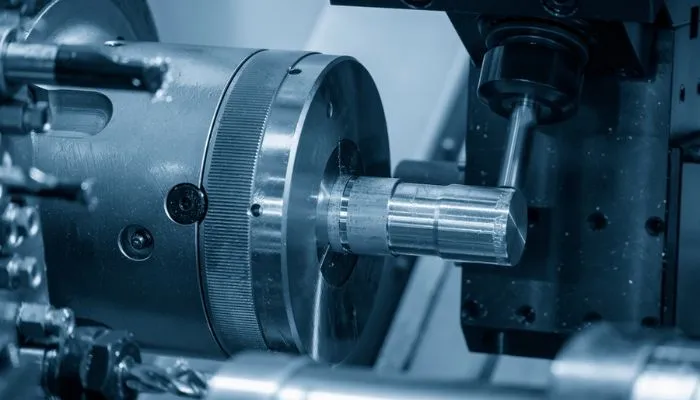Hello friends, Today we are going to tell you different types of cutting tool materials which are widely used in different types of a tool like drill bits, milling cutter, grinder, reamer, and so on.
Cutting tools are crucial components in various machining processes, and the choice of materials for these tools greatly influences their performance and durability. Different types of cutting tool materials exhibit distinct properties, making them suitable for specific applications. Here are some common types of cutting tool materials and their properties:
Types of Cutting Tool Materials

Mostly cutting tool materials which are used to make the cutting tool can be divided into the following types:
- High Carbon Steel
- Carbide
- Ceramics
- Cubic Boron Nitride (CBN)
- Ceramics
- Diamond
- Coated Tools
High-Speed Steel (HSS)
- Properties: HSS tools are known for their high wear resistance, toughness, and ability to withstand high temperatures without losing hardness. They are versatile and can be used for a wide range of cutting operations.
- Applications: HSS tools are commonly used for drilling, milling, and tapping operations in both ferrous and non-ferrous materials.
Carbide
- Properties: Carbide tools, made of tungsten carbide (WC) and cobalt (Co), exhibit excellent hardness, high wear resistance, and good heat resistance. They maintain their cutting edge sharpness at high cutting speeds.
- Applications: Carbide tools are ideal for cutting hard materials such as steel, stainless steel, and cast iron. They are widely used in high-speed machining and metal cutting applications.
Ceramics
- Properties: Ceramic cutting tools, made from alumina (Al2O3) or silicon nitride (Si3N4), possess exceptional hardness, high temperature resistance, and excellent wear resistance. They have low thermal conductivity.
- Applications: Ceramics are suitable for high-speed machining of hardened steels, cast irons, and nickel-based alloys. They are also used in high-temperature applications.
Cubic Boron Nitride (CBN)
- Properties: CBN tools are second only to diamonds in hardness. They have excellent abrasion resistance, high thermal conductivity, and can withstand high temperatures.
- Applications: CBN tools are used for machining hard materials like hardened steels, superalloys, and heat-resistant alloys.
Read also: Are PET Bottles Safe for us and the environment?
Diamond
- Properties: Diamond tools are the hardest cutting tools available, offering superior hardness, excellent wear resistance, and high thermal conductivity.
- Applications: Diamond tools are used for cutting and grinding extremely hard materials such as ceramics, glass, and non-ferrous metals.
Coated Tools
- Properties: Coated tools have a thin layer of coatings like titanium nitride (TiN), titanium carbonitride (TiCN), or aluminum oxide (Al2O3), enhancing their wear resistance and prolonging tool life.
- Applications: Coated tools are used in various cutting operations, improving tool performance and extending their longevity.
Choosing the right cutting tool material depends on factors such as the workpiece material, cutting speed, and specific machining requirements. Each type of material offers unique properties tailored to different machining challenges, ensuring efficient and precise metal removal processes.
Properties of Cutting Tool Materials
The material properties of each cutting tool materials are different, which are following:
Carbon Tool Steel Material
There are the following properties of Carbon tool steel:
- Hardness
- Toughness
- Wear Resistance
- Hot Hardness
- Chemical Stability
- Thermal Conductivity
- Coefficient of Friction
- Edge Strength
- Ease of Manufacturability
Cutting tool materials are engineered to exhibit specific properties that enable efficient machining processes. Here are the key properties of cutting tool materials:
Hardness
- Definition: Hardness refers to the ability of a material to resist deformation and wear.
- Importance: Hard cutting tool materials maintain their sharpness and cutting edge under mechanical stress, leading to longer tool life and better performance.
Toughness
- Definition: Toughness is the ability of a material to absorb energy without fracturing.
- Importance: Tough cutting tool materials resist chipping and fracturing during machining operations, ensuring durability and preventing premature failure.
Wear Resistance
- Definition: Wear resistance is the ability to withstand abrasive wear caused by the contact between the tool and the workpiece.
- Importance: Cutting tools with high wear resistance maintain their cutting edge integrity, allowing for prolonged use and consistent performance over time.
Hot Hardness
- Definition: Hot hardness refers to the ability of a material to maintain its hardness at elevated temperatures.
- Importance: Tools operating at high speeds generate heat. Materials with good hot hardness retain their hardness even under high-temperature conditions, ensuring effective cutting performance.
Chemical Stability
- Definition: Chemical stability refers to a material’s resistance to chemical reactions with the workpiece or cutting fluids.
- Importance: Chemically stable cutting tool materials prevent chemical wear and corrosion, maintaining their integrity and performance during machining processes.
Thermal Conductivity
- Definition: Thermal conductivity is the ability of a material to conduct and dissipate heat.
- Importance: High thermal conductivity helps in efficiently removing heat from the cutting zone, preventing overheating and maintaining the tool’s mechanical properties.
Coefficient of Friction
- Definition: Coefficient of friction indicates the resistance to motion between the tool and the workpiece.
- Importance: Lower coefficients of friction reduce the heat generated during machining and improve surface finish, ensuring smoother cutting operations.
Edge Strength
- Definition: Edge strength refers to the ability of the tool’s cutting edge to withstand mechanical forces and prevent chipping or breakage.
- Importance: Cutting tools with excellent edge strength maintain sharpness, allowing for precise and efficient material removal.
Ease of Manufacturability
- Definition: Ease of manufacturability refers to the feasibility of producing cutting tools from the material.
- Importance: Materials that are easy to manufacture result in cost-effective production of cutting tools, making them readily available for various applications.
Different cutting tool materials are engineered to optimize these properties based on specific machining requirements, ensuring the successful completion of various industrial tasks.
Read also: How Tight Should an Oil Filter Be?
So friends here we know about types of cutting tool materials and their properties.
I hope you all enjoyed these topics.Thank You.

throughgaun xyandanxvurulmus.j17DiFbzLPW4